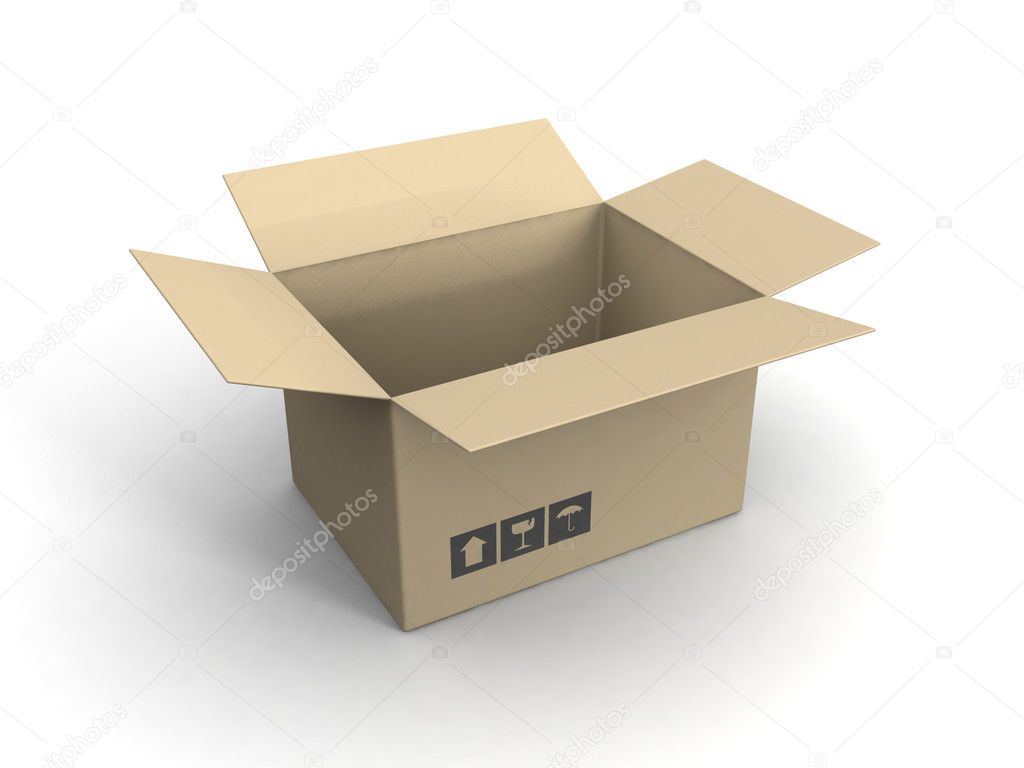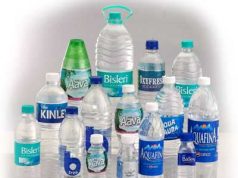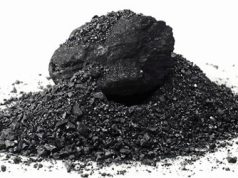
Background
Most items at your favorite supermarket, discount store, or shopping mall were safely delivered in boxes made of corrugated cardboard, and many are displayed in the same boxes, which were manufactured so they could be opened and used for this purpose. Other items may arrive in their own corrugated or uncorrugated paperboard boxes. Because corrugated cardboard is such a versatile packaging material, millions of tons are used each year to protect and display products. During 1992, more than 25 million tons of corrugated cardboard were produced in the United States. Another 6 million tons of uncorrugated boxboard or paperboard were also produced for use in folding cartons.
Corrugated cardboard is a stiff, strong, and light-weight material made up of three layers of brown kraft paper. In 1884, Swedish chemist, Carl F. Dahl, developed a process for pulping wood chips into a strong paper that resists tearing, splitting, and bursting. He named it the kraft process because it produces a strong paper that resists tearing, splitting, and bursting.
From the paper mill, rolls of kraft paper are transported to a corrugating, or converting, plant. At the plant, layers of kraft paper are crimped and glued to form corrugated cardboard, which is then cut, printed, folded, and glued to make boxes. At the beginning of this process, kraft rolls from the paper mill are loaded into a huge machine called a corrugator. A typical corrugator is as long as a football field—300 feet (91.44 meters). Some rolls of kraft paper are used as the corrugating medium, and others are used as liners, the layers of kraft paper glued on each side of the medium. After the corrugator has heated, glued, and pressed the kraft paper to form corrugated cardboard, the continuous sheet of cardboard is cut into wide box blanks that then go to other machines for printing, cutting, and gluing. Finally, batches of finished boxes are banded together for shipping to the food processor, toy maker, automobile parts distributor, or any of the thousands of businesses that depend on corrugated cardboard packaging.
Raw Materials
Fast-growing pine trees provide the primary raw material used to make corrugated cardboard. The largest packaging companies own thousands of acres of land where trees are matured, harvested, and replaced with seedlings. After the trees are harvested, they are stripped of their limbs; only the trunks will be shipped by truck to a pulp mill. The largest packaging companies also own the mills where trees are converted to kraft paper. At the mill, the harvested tree trunks are subjected to the kraft process, also known as the sulfate process because of the chemicals used to break down wood chips into fibrous pulp. After pulping and other processing, the fibers are sent directly to the paper machine where they are formed, pressed, dried, and rolled into the wide, heavy rolls of kraft paper sent to corrugating plants to be made into cardboard.
At the corrugating plant, only a few other raw materials are needed to make a finished box. Com starch glue is used to bond the corrugated medium to the liner sheets. Because so much glue is used, rail cars or large tanker trucks deliver it as a dry powder that will be stored in huge silos at the corrugating plant until it is needed. Drawn from the silo, the dry com starch is mixed with water and other chemicals and pumped into the corrugator to be spread on the corrugated medium as the layers of liner are added. Other raw materials are used to finish the corrugated cardboard after production. Waxes made from paraffin or vegetable oils can be applied to make a water- or grease-resistant container for food products. Brightly colored inks are also applied to create bold graphic designs for self-supporting displays featuring product name, information, and company name and logo. Teams of salespeople and designers work together to create the manufacturing and printing patterns, called dies, that are used to cut and print a specific box design. The dies are created in a pattern shop and transferred to the rotary die-cutting equipment and printers that finish the box blanks.
Design
Kraft paper has been manufactured since 1906. Since then, pulp processing, paper making, and corrugating operations have been developed to a high state of efficiency and productivity. Today, in the corrugated cardboard industry, designers are creating innovative containers that require four-color printing and complex die-cutting. These innovative containers are designed with sophisticated software such as computer- aided design (CAD) programs, allowing a packaging designer to brainstorm different package designs before manufacturing begins. A designer using a CAD program can call up and modify different designs that have been stored in a computer design library. Thus, existing packages can generate new designs. Many retail stores use such light, strong, and colorful containers directly, as point-of-purchase displays.
The Manufacturing Process
Pulping the pine chips
1 Manufacturing a corrugated cardboard box begins with the pulping of wood chips in the kraft (sulfate) process. First, tree trunks are stripped of bark and torn into small chips. Next, these chips are placed in a large, high-pressure tank called a batch digester, where they are cooked in a solution, or liquor, made of sodium hydroxide (NaOH) and several other ionic compounds such as sulfates, sulfides, and sulfites. These strongly alkaline chemicals dissolve the lignin, the glue-like substance that holds the individual wood fibers together in a tree trunk.
2 When the pressure is released after several hours, the wood chips explode like popcorn into fluffy masses of fiber.
Making kraft paper
3 After additional cleaning and refining steps, a consistent slurry of wood pulp is pumped to the paper-making machine, also known as a Fourdrinier machine. Gigantic, square structures up to 600 feet long (182.88 meters), these machines contain a wire mesh in which the paper is initially formed. Next, the paper is fed into massive, steam-heated rollers and wide felt blankets that remove the water. At the end, the finished medium, or liner, is rolled for shipment.
Shipping and storing the kraft paper
4 Rolls of kraft paper for corrugating are available in many sizes to fit the production equipment at different corrugating plants. The most common roll sizes are 67 inches (170.18 centimeters) wide and 87 inches (220.98 centimeters) wide. An 87- inch roll of heavier paper can weigh up to 6,0 pounds (2,724 kilograms). As many as 22 rolls of 87-inch paper can be loaded into one railroad boxcar for shipment to a corrugating plant.
5 At the plant, the kraft paper is separated into different grades, which will be used for the medium and the liner. These different grades of corrugated cardboard can be made by combining different grades of kraft paper. A knowledgeable packaging specialist works with a customer to determine the strength required for the corrugated cardboard container being planned. Then, when a plant receives an order for containers, a product engineer specifies the combination of medium and liner to produce a cardboard to match the customer’s requirement.
Corrugating the cardboard
6 Using powerful fork-lifts, skilled equipment operators select, move, and load rolls of kraft paper at one end of the corrugator.
(Corrugated cardboard manufacture includes two key steps: making kraft paper and corrugating the cardboard. Kraft paper involves pulping wood chips and then feeding the resulting paper substance through massive steam rollers that remove the water. Corrugating is also done in a machine that utilizes heavy rollers. One roll of cardboard is corrugated and then glued between two other layers (liners) by the same machine. The glue is then cured by passing the cardboard over heated rolls.)
7 One roll of medium is loaded to run through the corrugating rolls, and a roll of liner is fed into the corrugator to be joined with the corrugated medium. Liner from another roll travels up over the corrugating rolls along a flat structure called the bridge. This liner will be glued to the corrugated medium later in the process.
8 For a large production run, additional rolls are loaded into automatic splicers. Sensitive detectors check the rolls of paper feeding into the corrugator. When a roll is nearly empty, the corrugator control system starts a splicer, and paper from the new roll is joined to the end of the paper going through the machine. Thus, production of corrugated cardboard is continuous, and no production speed is lost.
9 The medium to be corrugated is fed into the giant, electrically driven rollers of the corrugator, first through the preheating rollers and then into the corrugating rolls. Steam at 175 to 180 pounds of pressure per square inch (psi) is forced through both sets of rollers, and, as the paper passes through them, temperatures reach 350 to 365 degrees Fahrenheit (177 to 185 degrees Celsius).The corrugating rolls are covered with flutes—horizontal, parallel ridges like the teeth of massively wide gears. When the hot paper passes between the corrugating rolls, the flutes trap and bend it, forming the middle part of a sheet of corrugated cardboard. Each corrugating machine has interchangeable corrugating rolls featuring different flute sizes. Installing a different flute size in the corrugator changes the width of the corrugated medium.
(A finished piece of corrugated cardboard consists of a single corrugated layer sandwiched between two liner layers.)
The medium travels next to a set of rollers called the single-facer glue station. Here, one layer of liner is glued to the medium. Starch glue is carefully applied to the corrugated edges of the medium, and the first layer of liner is added. From the single- facer, the medium and liner go to the double- backer glue station where the other layer of liner from the bridge is added following the same procedure. Continuing through the corrugator, the cardboard passes over steam heated plates that cure the glue.
Forming the blanks into boxes
lO At the end of corrugator, a slitter Lm scorer trims the cardboard and cuts it into large sheets called box blanks. Box blanks pop out of the slitter-scorer like wide slices of toast and slide into an automatic stacker that loads them onto a large, rolling platform. From here, they will be transported to the other machines that will convert them into finished containers. Skilled production workers use a computer terminal and printer to prepare a job ticket for each stack of box blanks produced by the corrugator. With the job ticket, workers can route the stack to the right fabrication machines, called flexos (the name is short for flexographic machine). A flexo is a wide, flat machine that processes box blanks.
Printing dies and die-cutting patterns are prepared in a pattern shop on large, flexible sheets of rubber or tin. The dies and patterns are loaded onto the large rollers in the flexo, and the box blanks are automatically fed through it. As each blank passes through the rollers of the flexo, it is trimmed, printed, cut, scored, and, in a printer-folder- gluer, folded and glued to form a box. From the flexo, the finished boxes are automatically stacked and sent to a banding machine to be wrapped for shipping. Other equipment in a corrugating plant includes stand-alone die-cutters, die-cutters with print stations, and machines known as curtain coaters that apply a wax coating to fruit, vegetable, and meat containers. Box blanks requiring only simple, one-color printing and die-cutting can be run through a stand-alone die-cutter, print station, and curtain coater to produce water- or grease-resistant containers.
Quality Control
Quality control begins with the suppliers of the kraft paper used to make corrugated cardboard. Kraft paper must be smooth and strong. After the paper passes through the corrugator and is made into box blanks, individual blanks are pulled from a stack and tested. The Cobb test measures moisture in the liner and medium. Glue strength, bursting strength, compression, and highly accurate dimensional tests determine the quality of the manufacturing process. A warp test determines the flatness of the box blank, insuring that each blank will travel smoothly through the flexo machines. As skilled workers run batches of box blanks through the flexo machines, individual boxes are pulled and inspected. Trimming, cutting, and scoring must be correct. No damage to the cardboard is allowed. Also, the different layers of colored ink used in color printing must be perfectly aligned.
The Future
Future corrugated containers will be manufactured using kraft paper produced from recycled packaging rather than trees. Recycling and other environmentally friendly processes will continue to grow in importance in the future of corrugated cardboard. Today, inks based on soybean oil and biodegradable waxes and other coatings are beginning to be used in container manufacturing. Leading packaging companies are already operating paper mills that make fresh, clean kraft paper by de-inking and pulping used containers.
Where To Learn More
Books
Bessen, A. Howard. Design & Production of Corrugated Packaging & Displays. Jelmar Publishing Company, Inc., 1991.
The Corrugated & Paperboard Container Industry: An Analysis of Current Markets &
Prospects for Future Growth. Business Trend Analysts, Inc., 1991.
Maltenfort, George G. Corrugated Shipping Containers: An Engineering Approach. Jelmar Publishing Company, Inc., 1988.
Rohde, Elliot S. Producing Corrugated Containers Profitably. Jelmar Publishing Company, Inc., 1993.
Kline, James E. Paper And Paperboard: Manufacturing and Converting Fundamen¬tals, 1991.
Periodicals
Carey, Kevin. “The Science of Diecutter Makeready.” Boxboard Containers. March, 1993.
“Engineers Claim Cardboard Cup,” Design News. October 6, 1986, p. 51.
“Industry Statistics,” Paperboard Packaging. March, 1993, p. 16.
Tappi [Technical Association for the Pulp and Paper Industries] Journal.








